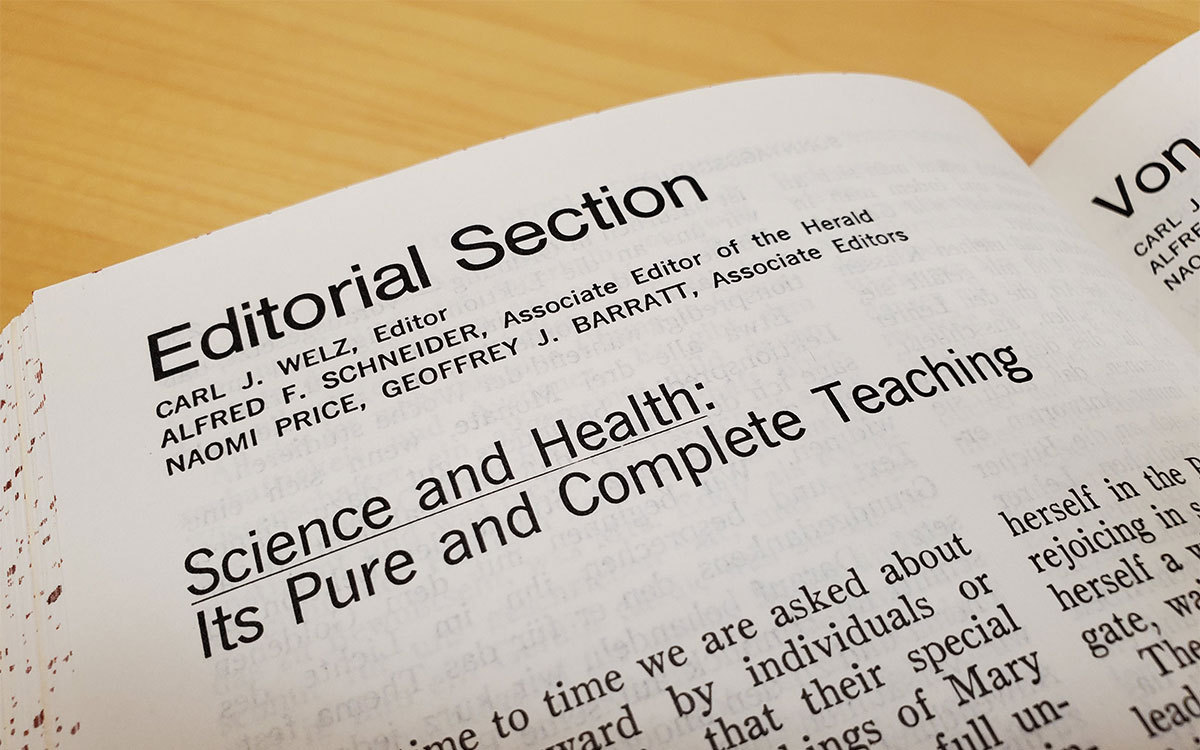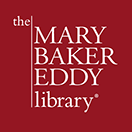Does the Library have information on Max Kappeler?

We are sometimes asked questions about Dr. Max Kappeler (1910–2002), especially concerning his teaching and connection to Christian Science. Here is some background.
Kappeler became a member of The First Church of Christ, Scientist (The Mother Church) in 1935. His application was countersigned by John W. Doorly, a Christian Science practitioner and teacher, who at the time was member of the Christian Science Board of Lectureship. Kappeler’s connection to Doorly is important to an understanding of his career.
On his Mother Church membership application, Kappeler identified his former religious affiliation as Swiss Protestant. He gave his city of residence as Zurich, Switzerland, where he would live for the rest of his life.
Kappeler received Christian Science Primary class instruction in England from Doorly. Subsequently he withdrew from The Mother Church in 1946. Kappeler was a strong advocate of his teacher’s views—to the extent that they are sometimes referred to as the “Doorly-Kappeler” teaching. His own Mother Church membership ended in 1952. After that he continued to write, teach, and speak, until his death 50 years later. He published a number of books, audiotapes, and study guides on the “Doorly system,” and gave talks and classes that were directed toward Christian Scientists rather than the public.
Robert Peel was a noted historian and biographer of Mary Baker Eddy, the discoverer of Christian Science and author of Science and Health with Key to the Scriptures. On the subject of interpreting her teachings, he offered this general assessment in the third volume of his trilogy on Eddy, published in 1977: “In [Eddy’s] own day, as well as since, Christian Scientists with a speculative turn of mind showed a tendency to elaborate her teachings into an ingenious latter-day scholasticism, increasingly abstract as it soared into the realm of pure but undemonstrated theory.”1
Doorly and Kappeler’s “speculative turn of mind” was evident to Peel in a schema that he described in one of his book’s footnotes:
Lining up Mrs. Eddy’s seven synonyms for God horizontally in an arbitrary, inflexible order and listing vertically her four metaphorical “walls” of the “city foursquare” of St. John’s Revelation (i.e., the Word, Christ, Christianity, Science), [Doorly and Kappeler] produced a rectangular “matrix” of little squares or boxes representing the stages of development by which one rose, theoretically, from Christian Science to Absolute Christian Science to Divine Science to Science pure and abstract. Everything from the seven days of creation and the four Gospels to the chapter arrangement of Science and Health—indeed to the whole of human history—was then forced into this matrix.
Kappeler held that Eddy had not been aware of the full significance of her own discovery and that Doorly offered the complete explanation. Peel also noted their “tendency to regard the Christian or religious nature of Christian Science as something to be left behind for a ‘scientific’ or ‘absolute’ approach” and “their repudiation of the Church founded by Mrs. Eddy….”2
Kappeler’s work first gained traction after World War II. The backdrop included the rise of secularism and scientism, world desolation and dislocation, and the start of the Cold War. And among Christian Scientists, both critical and sympathetic portrayals of Eddy lacked the balance and depth that would gradually become available as historical materials were made accessible and the Christian Science movement’s understanding of its founder matured.
Questions arose over the years about the ideas Kappeler promulgated. A 1975 editorial in The Christian Science Journal and the German Der Herold der Christlichen Wissenschaft was titled “Science and Health: Its Pure and Complete Teaching.” Signed by the Christian Science Board of Directors, it began by posing a question:
From time to time we are asked about claims put forward by individuals or groups who maintain that their special interpretations of the teachings of Mary Baker Eddy are necessary for a full understanding of Christian Science. This includes supposed elucidations of and improvements upon the Christian Science textbook, Science and Health with Key to the Scriptures.
What does [Mary Baker] Eddy herself, as Discoverer and Founder of Christian Science, have to say on this subject?3
The article then outlined a response. Without naming Kappeler or other groups, it rebutted the claims they advanced. The Directors offered Eddy’s own words in support, including these:
“Science and Health with Key to the Scriptures” is a complete textbook of Christian Science; and its metaphysical method of healing is as lucid in presentation as can be possible, under the necessity to express the metaphysical in physical terms. There is absolutely no additional secret outside of its teachings, or that gives one the power to heal; but it is essential that the student gain the spiritual understanding of the contents of this book, in order to heal.4
- Robert Peel, Mary Baker Eddy: The Years of Authority (Boston: Holt, Rinehart, and Winston, 1977), 214.
- Peel, Years of Authority, 454, n. 23.
- “Science and Health: Its Pure and Complete Teaching,” The Christian Science Journal, July 1975, 387–388. Several years later in 1980, it was issued as a pamphlet. The 1975 article was also translated in “Wissenschaft und Gesundheit: Seine unverfälschte und vollständige Lehre,” Der Herold der Christlichen Wissenschaft, September 1975, 251–253.
- Mary Baker Eddy, Miscellaneous Writings 1883–1896 (Boston: The Christian Science Publishing Society, 1896), 50.

